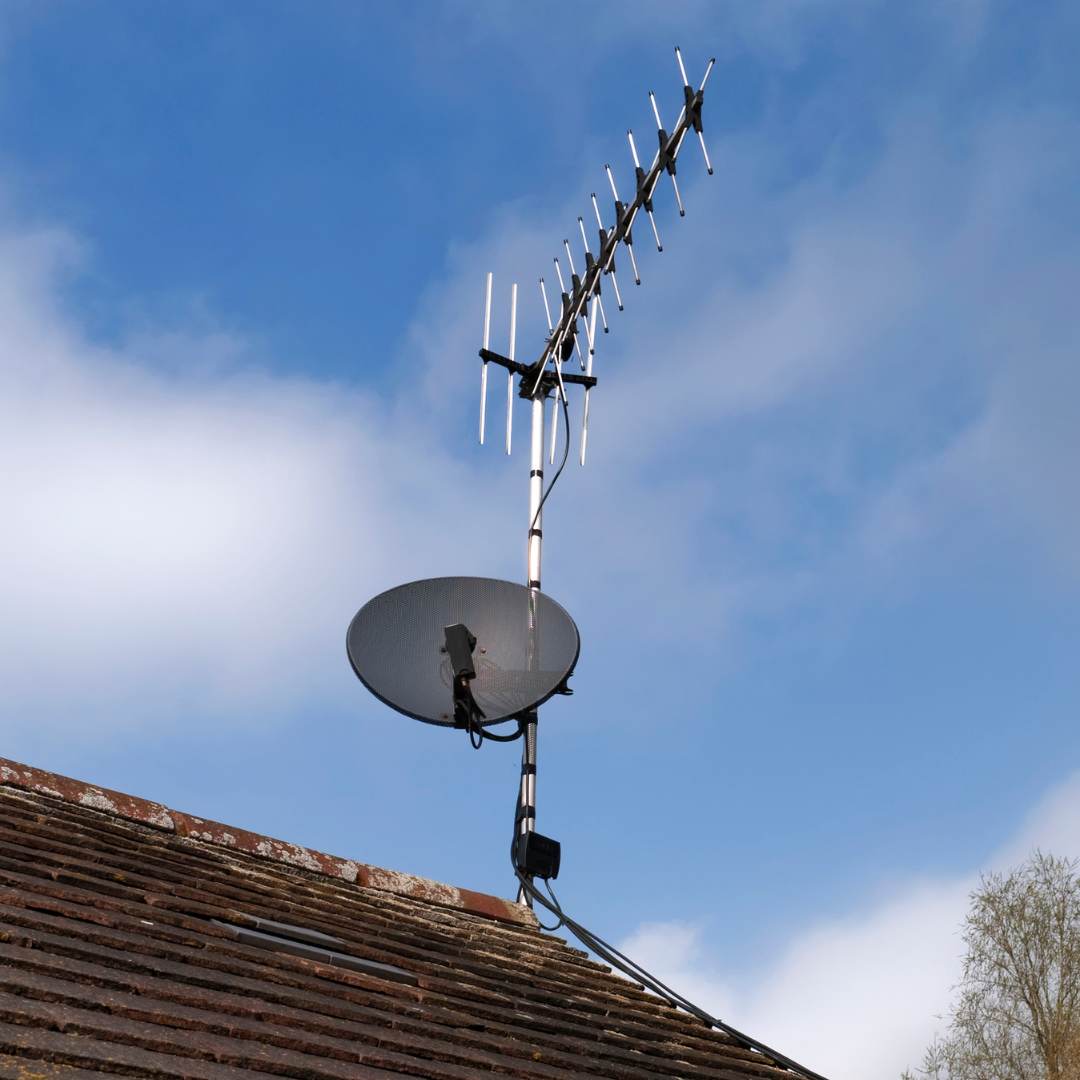It is important to choose the best TV aerial for you home in order to improve your viewing experience. It is crucial to make informed decisions when choosing the right aerial for your home. There are many types of aerials on the market. This guide will give you a thorough understanding of different aerial types and factors to consider. It also includes tips for installation.
Understanding Different Types Of TV Aerials
Outdoor Aerials
Outdoor aerials can be mounted high on the outside of a building or on its roof. Due to their elevated location and reduced interference, they are known for delivering superior reception. Installation may require professional assistance, but the benefits are often worth the cost.
Indoor Aerials
They are easy to install and compact, which makes them popular for areas that have a strong signal. Modern designs and technologies have improved their effectiveness, despite the fact that they are more susceptible than older aerials to interference.
Loft Aerials
These aerials can be installed in the attic or loft and offer a compromise to both outdoor and indoor models. These aerials are not affected by weather, but they may be affected by roofing materials such as metal or tiles with high density.
Specialist Aerials
Aerials may be required in some homes due to signal problems or reception issues. Aerials for poor signal areas and those that pick up multiple transmitter signals are examples.
Considerations When Choosing A TV Aerial
Local Signal Strength and Quality
It is important to understand the signal strength in your area. You can check this by using a signal strength tester online or consulting a professional installer. Your area’s geography, whether it is hilly, flat or rural, can also affect reception.
Types of Installation
Your choice of an indoor or outdoor aerial may depend on the type of home you live in, your lease agreement, or aesthetic concerns. Installations in the loft and outdoors usually provide better reception, but are more complicated.
Compatibility
Verify that your aerial is compatible with any set-top boxes or recorders. The majority of aerials support digital signals but it is always a good idea to check.
Frequency Bands
The TV signal is transmitted on different frequency bands. As the UK moves towards digital broadcasting ensure that you choose an aerial that is compatible with the frequencies required to receive other services.
Installation Considerations
Hire a Professional Installer
Hiring a professional for optimal installation and safety is highly recommended, especially when it comes to roof installations. They will handle the installation safely and can optimise the position of the aerial by testing different alignments to get the best signal.
DIY Installation
You should be aware of the process and tools required to install an aerial, especially if you are installing it yourself. Your primary concern should be safety.
Checking Regulations
Check with your local council before installing an outdoor aerial. Review any tenancy agreement or community rules. This is especially important in shared buildings and conservation areas.
Upgrades and Maintenance
Regular Checkups
You can avoid disruptions by performing regular maintenance on your aerial. Check for corrosion, loose parts, and obstructions caused by nearby trees.
Technology Upgrades
Aerial technologies continue to develop. Upgrades to your aerial might be required if you switch service providers or there is a change in broadcast technology.
Additional Tips & Tricks
Aiming & Positioning
Position and orientation of your TV aerial is crucial to reception quality. Even minor adjustments can have a big impact.
Signal Boosters
Signal boosters can improve reception in areas with weak signals. This should only be used as a secondary measure, after the aerial has been installed and placed correctly.
Consult Neighbours
Consult your neighbours to learn about their aerials and experiences.
Conclusion
The right Tv aerial in NZ is a combination of knowing the local signal conditions, choosing the correct type of aerial and making sure that the installation is done correctly, whether by a professional or DIY. You can improve your TV reception by considering these factors. You can often save time by investing in a professional installation.

